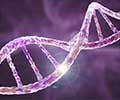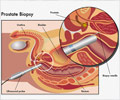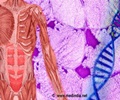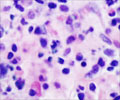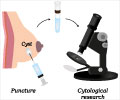Identification of pre-existing rare variation (PIK3CA gene) points to new approach to treatment, biopsies.

‘Pre-existing mutations lurk in a patient's tumor at 10 times the rarity than previously appreciated and still cause rapid drug resistance.’





The mutation, to a gene called PIK3CA, appeared initially to be an acquired resistance variation that arose after treatment. By re-analyzing the pretreatment biopsy, Kwong and colleagues were able to establish that it was rare but present from the start, hiding on one side of the tumor. PIK3CA variant started rare, expanded rapidly
"Our study is the first to measure multiple regions in pre-treatment tumor biopsies at high resolution and then track the resistant mutation over years of treatment through six biopsies," Kwong said. "We are able to say that this mutation started out rare and then rapidly expanded as the MEK/CDK4 inhibitors killed off a large number of non-resistant cells."
"Right now, when we detect a resistance mutation after treatment, we often don't know whether it came out of nowhere as a new mutation or was pre-existing but undetected in the original tumor," Kwong said.
Understanding the difference could guide treatment to make it more effective, earlier, Kwong notes, and identifying rare mutations that are geographically isolated on a tumor will require improving our approach to analyzing biopsies.
Advertisement
Initial response, then swift progression
Advertisement
Whole exome sequencing of the resistant tumor after treatment revealed a mutation to PIK3CA known to promote tumor growth. Since the mutation was detected only 16 days after treatment began, Kwong and colleagues decided to re-examine the pretreatment biopsy, which sampled a single region of the tumor and had not found a PI3KCA mutation.
By examining seven regions of the biopsy sample using an amplification method developed by co-author David Zhang, Ph.D., assistant professor of Bioengineering at Rice University, the team found PIK3CA mutations in three regions. The pre-existing mutation was both rare and geographically dispersed in the tumor, making it hard to detect by sampling a single region.
Their findings suggest multi-region sampling would expose pre-existing resistant cells, an approach that would not be cost-effective at present, Kwong said, but is likely to become more practical as technology develops.
The PIK3CA mutation could also be detected by isolating circulating cell-free DNA in the blood after resistance developed, making it a potential target for liquid biopsies that are under development.
S6 provides a common target
Simply adding a PIK3CA inhibitor to the MEK/CDK4 combination would likely be too toxic, so the team analyzed 300 proteins to find targets that might be present in more than one of the three pathways.
They found a protein called S6 to be the only spot where all three of these cancer-promoting pathways meet. Treating mice with an S6 inhibitor re-sensitized them to treatment with the MEK/CDK4 combination, restoring the drugs' ability to shrink the PIK3CA mutation-bearing melanomas.
Kwong said an optimized human version of the S6 inhibitor in mice has not yet been developed, but their findings point to a possible target for human drug development.
"One of the main questions in cancer drug resistance is how often it comes from a pre-existing or a completely new mutation" said Gabriele Romano, Ph.D., a postdoctoral fellow in Translational Molecular Pathology and the study's first author. "Our study helps define some of the parameters and tools that will be needed to answer this tricky question."
Source-Eurekalert





